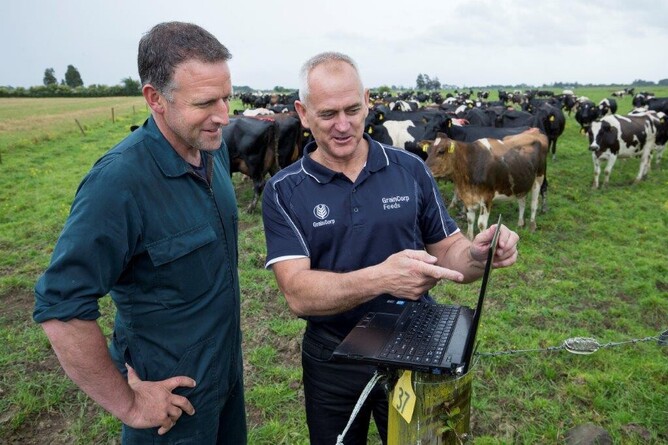Too much grass! Extreme pasture covers present unique challenges for some Waikato dairy farmers
With the prolific pasture growth rates this Autumn-Winter, some farmers across the Waikato are tackling the challenges of extreme grass covers over several paddocks of 4,500kgDM/ha and higher.
GrainCorp Feeds’ technical support manager Waikato, Ken Winter, says farmers in the region are being presented with a problem they may not have encountered in the past.
“Ordinarily, it’s reassuring for farmers to have plenty of feed ahead to cover what can normally be challenging months for Spring growth. However, with covers this high and the current warm conditions, farmers risk losing pasture quality on a grand scale, which can have negative implications for milk production and animal health.”
Ken says dropping out meal to feed more pasture may seem like a logical option when there is a lot of grass. But if cows don’t convert the grass efficiently, they risk not reaching their true peak.
“Farmers need to factor in production potential missed, feed wasted, and body condition lost. The true effect is often not realised until further into the season when it is reflected in poor fertility results and lack of lactation persistence.”
With extreme pasture covers, digestibility can often be less than ideal, meaning cows cannot physically eat enough to meet their energy requirements.
“Trying to break-feed pasture to cows while maintaining residuals can result in pushing an ever-increasing wedge of feed ahead of your herd that is dropping in feed value, slowing pasture recovery, and lowering the energy value of the feed,” says Ken.
“This type of feed will get increasingly more difficult to harvest and make it harder for farmers to achieve ideal residuals.
“If you push milkers to graze this type of feed you will underfeed them, strip weight from them, reduce their production and fertility, and compromise cow health and your whole season.”
Ken suggests a number of options available to Waikato farmers to help them mitigate the risks of excessive pastures covers to their farm business and to the health of their herd.
Look at how many paddocks you can immediately harvest for silage. While this pasture may not make the best silage, it’s more important to get your paddock back under control and in a great growing state for your milkers. The silage is also a surplus feed you can use at a later date.
Milkers and Colostrum cows can take the tops off many of the high cover paddocks without doing any harm.
Milkers can graze down to about 2,200kgDM/ha if the pasture is not of an unreasonable quality. Fully feed the cow and put your herd back onto that paddock earlier in the next round.
Use dry cows and springers to graze behind your milkers.
Be prepared to get the mower out early this year to get your residuals right. Some farmers have already been mowing ahead of the cows in August.
Lock up ‘light silage’ paddocks early where residuals need tidying up.
“Over-feeding springers on high potassium grass with high DCAD levels can increase metabolic disorders,” cautions Ken. “Restricting the amount of grass available to springers and keeping the right amount of meal in your system is one effective part of reducing metabolic challenges. This strategy will allow you to make up for the shortfall of nutrients and energy, while ensuring the springers’ mineral status is looked after.”
The shading caused by long grass will also encourage the growth of chick weed, which could also be high in potassium and nitrates - prevalent in many pastures this season.
“Speeding up your round by taking the top off paddocks and opening the pasture up will allow light into the base of the grass sward,” says Ken. “Taking some extra feed into next month by way of increased residuals could be a godsend if conditions change for the worse.”
